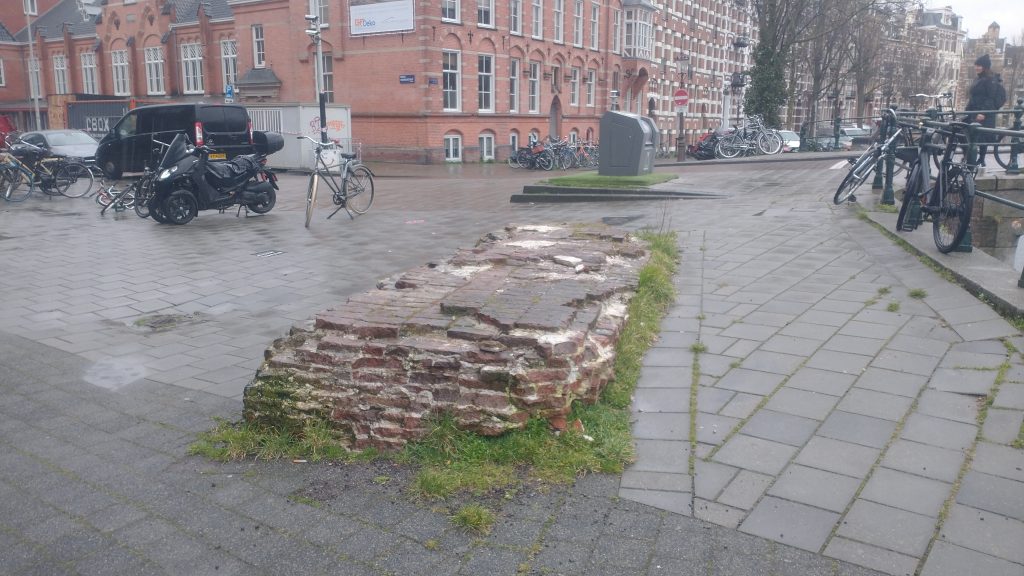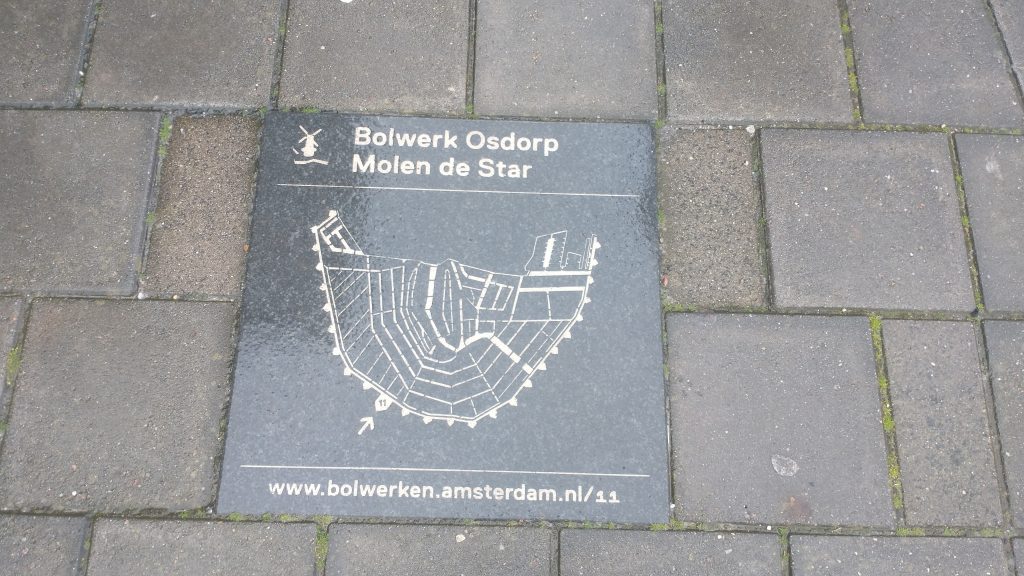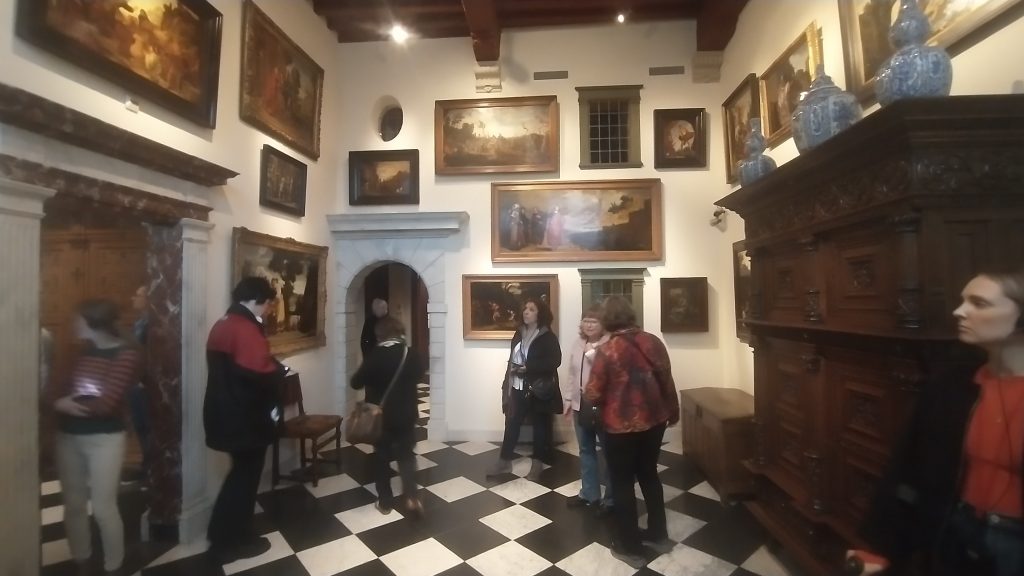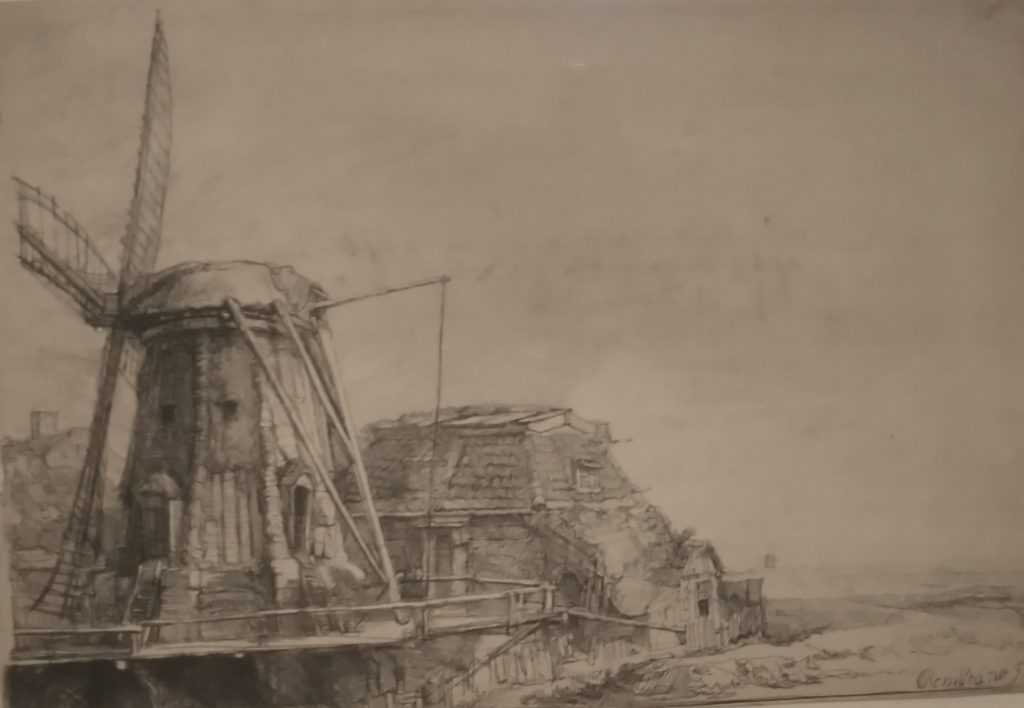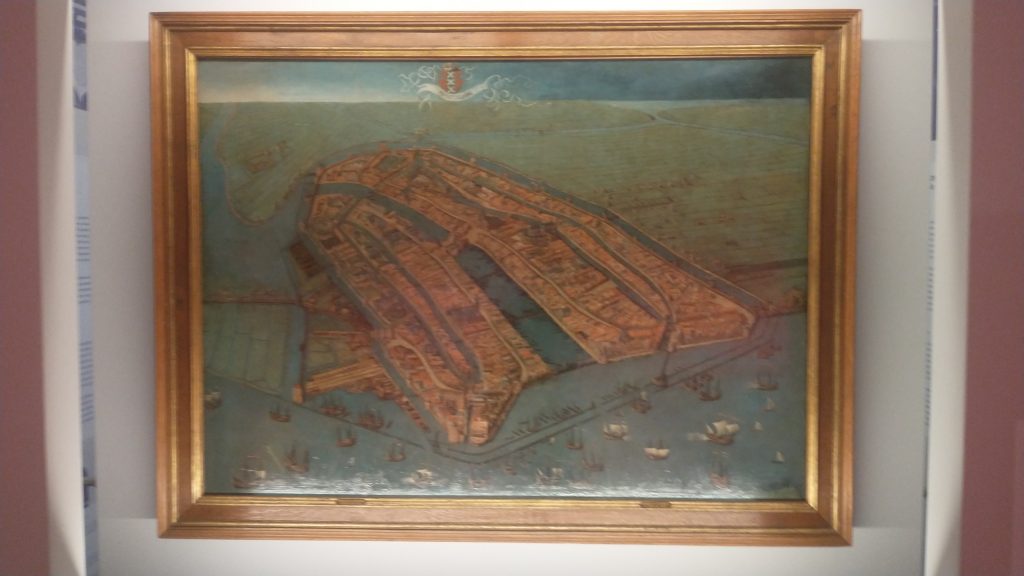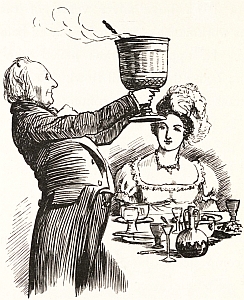
The drink of choice was port. Then brandy, claret, punch, rum, porter. So says my source Henry Jeffreys in his book ‘Empire of Booze’ and in this Guardian article:
Claret, probably, originally outsold port. But the wars against France and the difficulty of importing French wine, saw a transfer to wines from our ‘oldest ally’ Portugal. But the travel distance was longer, so the wine was fortified to help preserve it better. Hence, the British addiction to port. Sherry was also popular for similar reasons, being a fortified white wine. Shakespeare calls it ‘sack’ and sometimes ‘Canary’. (Toby Belch ‘says thou lack’st a cup of canary ‘ in ‘Twelfth Night’, which is a Christmas play.) See below for more on Sack and Shakespeare.
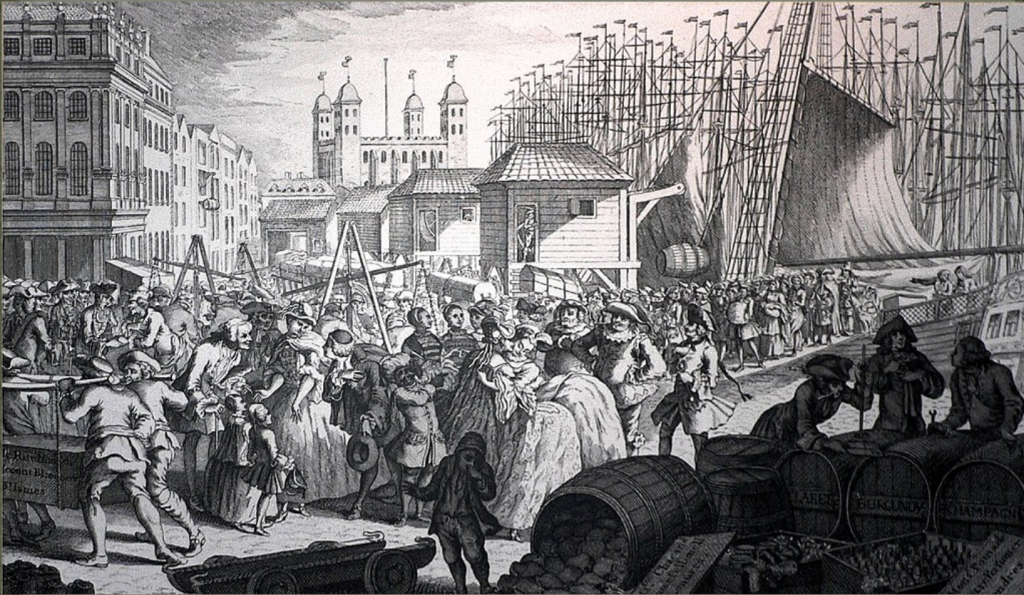
Consumption was prodigious. Samuel Johnson said, ‘All the decent people in Lichfield (where Johnson came from) got drunk every night and were not the worst thought of’. The Prime Minister. William Pitt the Younger said, ‘I have drunk three bottles of port without being the worst for it. University College has witnessed this.’ He is referring to his college at the Oxford University, and so he might be considered to be another of our Prime Ministers who have first disgraced themselves at Oxbridge only to rise to rule the unfortunate British. However, in those days, Port was sold in pint measures (45cl) and was 16%, while now it is 20% and sold in 75cl bottles. So, not quite that bad?
Even so, three bottles is still a lot and a drunken population would have not only increased the death rate but also increased violence and abuse. Gout was one result of too much drinking and a rich diet.
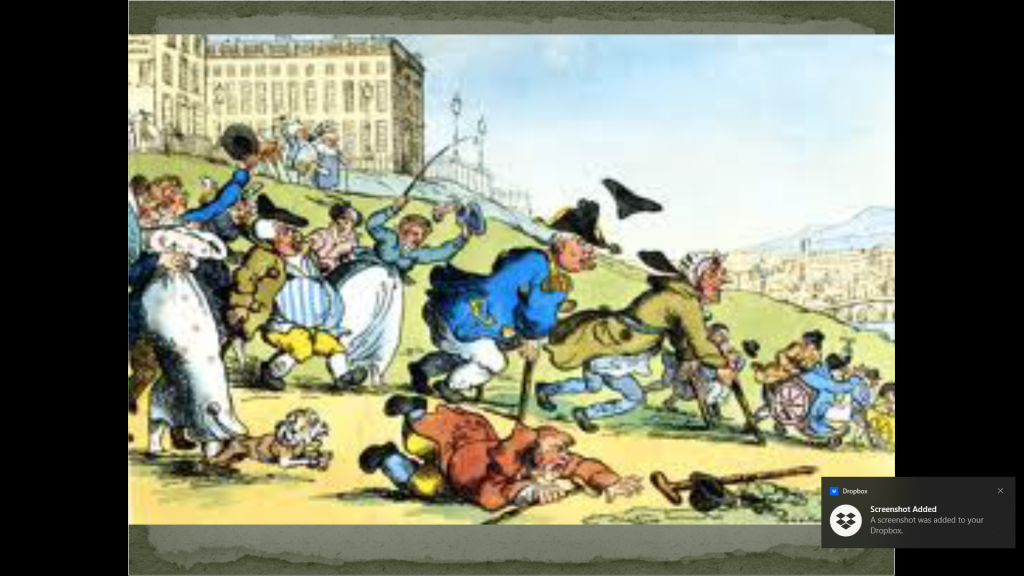
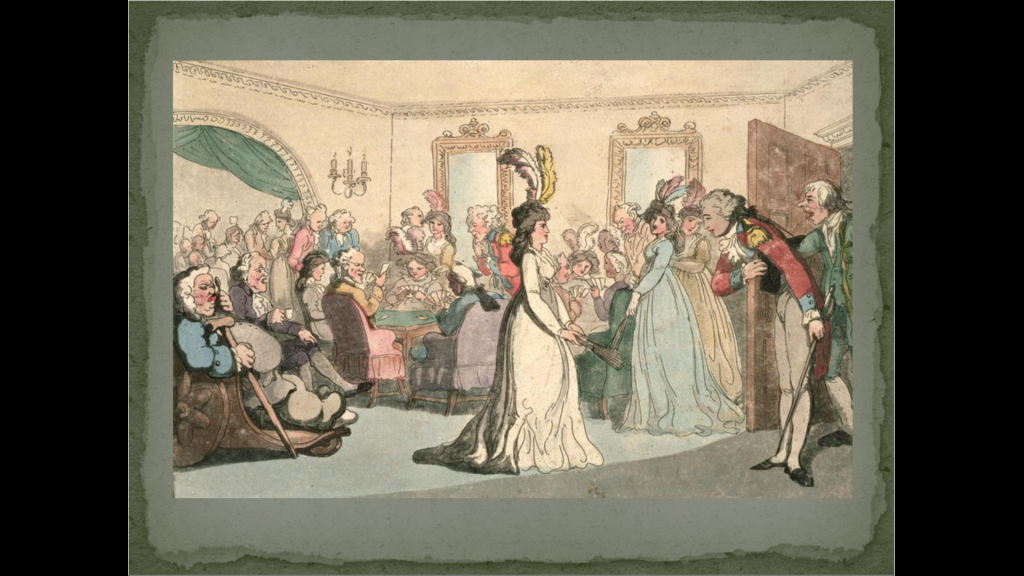
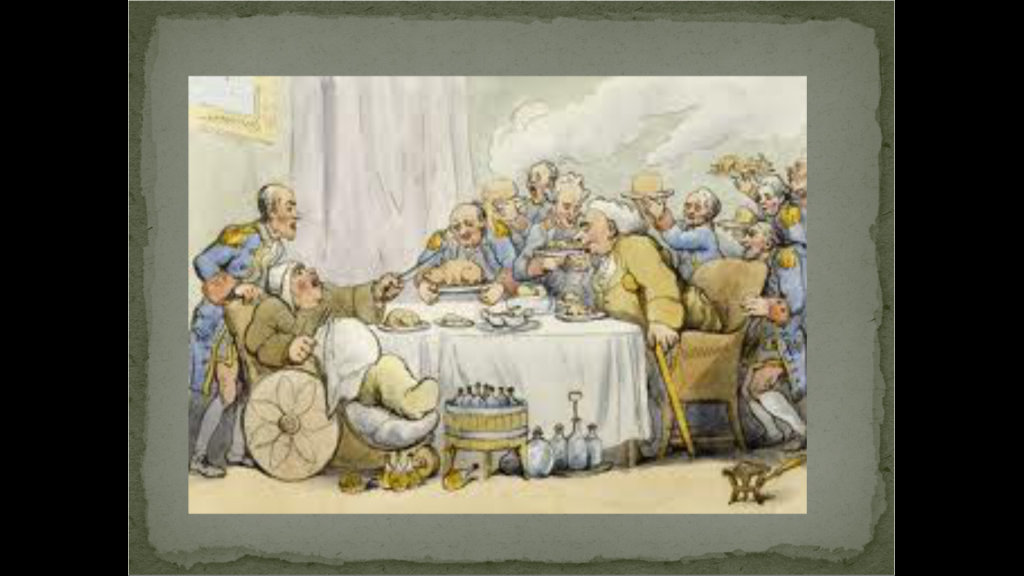
However, this is Christmas so let’s end on a high note, so here are a couple of recipes!
To make ye best punch
“Put 1½ a pound of sugar in a quart of water, stir it well yn put in a pint of Brandy, a quarter of a pint of Lime Juice, & a nutmeg grated, yn put in yr tosts or Biskets well toasted.”
Katherine Windham’s Boke of Housekeeping, 1707
And Gin? The cheap gin panic had calmed down by the 1770s after no less than eight Gin Acts of Parliament. Booths and Gordon’s Gins were established in London during this period and Gin almost a respectable drink.
There appears to have been a shortage of Gin punch recipes in the 18th Century, but by the end of that century this recipe survives from London’s Garrick Club
– half a pint of gin, lemon peel, lemon juice, sugar, maraschino, a pint and a quarter of water and two bottles of iced soda water.
You would not need many of these to become quite relaxed quite quickly!
Sack and Falstaff.
Sir John Falstaff in Henry IV eulogies on sack saying it not only makes for excellent wit but also the best soldiers:
“A good sherris sack hath a two-fold operation in it. It ascends me into the brain, dries me there all the dull and crudy vapors which environ it, makes it apprehensive, quick, forgetive, full of nimble, fiery, and delectable shapes, which, delivered o’er to the voice, the tongue, which is the birth, becomes excellent wit“.
The second your excellent sherris is the warming of the blood; which
cold and settled, left the liver white and pale, which is the
badge of pusillanimity and cowardice; but the sherris warms
and makes it course from the inwards to the parts extremes.
illumineth the face, which, as a beacon, gives warning to all
rest of this little kingdom, man, to arm; and then the vital
commoners and inland petty spirits muster me all to their
captain, the heart, who, great and puff’d up with this
doth any deed of courage—and this valour comes of sherris.
that skill in the weapon is nothing without sack, for that
it a-work; and learning, a mere hoard of gold kept by a devil
till sack commences it and sets it in act and use. Hereof
it that Prince Harry is valiant; for the cold blood he did
naturally inherit of his father, he hath, like lean, sterile,
bare land, manured, husbanded, and till’d, with excellent
endeavour of drinking good and good store of fertile sherris,
that he is become very hot and valiant. If I had a thousand
the first humane principle I would teach them should be to
forswear thin potations and to addict themselves to sack.
in the Merry wives of Windsor Falstaff is still always drinking sack. He asks Bardolph ‘Go fetch me a quart of sack; put a toast in’t.‘ Toast is thought to freshen up stale sack. Also, it could be drunk hot as suggested by Falstaff asking for:
‘Go brew me a pottle of sack finely.’
Bardolph asks if he wants the sack with eggs but Falstaff refuses asking for his sack to be a
‘Simple of itself; I’ll have no pullet-sperm in my brewage.’
A simple is the opposite of a compound, so pure with no additions (apart from the toast!). Pullet sperm is, in think, a dismissive reference to eggs. Sack posset was original a medicine but later a popular treat made with eggs, cream, spices and sack. Once concocted, the top would be a foamy or crusty cap, the middle a custard and the bottom a spicy hot alcohol.
First Published in 2022 and revised December 2023 and 2024

